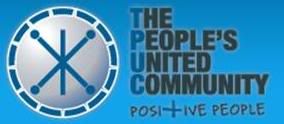 Diversity or ethnic cleansing?
Diversity or ethnic cleansing?
English is the second language for 30 per cent of schoolchildren in Manchester, a new report has revealed. The figure is more than 70 per cent in three of the city's wards.
State of the Wards – an in-depth study of Manchester’s 32 neighbourhoods – also reveals huge differences in the quality of life for residents in different parts of the city.
The report identifies Longsight, Cheetham and Rusholme as three wards where more than 70 per cent of school pupils have a mother tongue other than English.
That compares to fewer than five per cent in the Baguley ward of Wythenshawe.
Across Manchester, English is now a second language for 30.0pc of schoolchildren – up from 28.9pc two years ago. The national average is about 13 per cent.
Town hall chiefs said the figures reflected Manchester's proud tradition of diversity.
Jim Battle, the council’s deputy leader, said: "For generations this has been a city where people have gathered from all over the world to live, work and study. These many different cultures bring so much to our communities and it is a tradition that works so well as people continue to share a mutual respect for one another’s backgrounds and nationalities."
State of the Wards also looks at crime levels, health, employment and educational achievement in each part of the city. It has been published alongside the annual State of the City report – a more broad-brush overview, details of which were published in the M.E.N. earlier this month.
The latest report reveals how the city’s most deprived neighbourhoods – in north and east Manchester and parts of Wythenshawe – have the highest numbers of benefits claimants, worse health and relatively poor school results and attendance.
Residents living just a few miles away, in more affluent parts of south Manchester, enjoy happier lives, better health and higher academic achievement.
More than 13 per cent of young people in Miles Platting and Newton Heath were not in education, employment or training – compared to fewer than one per cent in Chorlton.
In schools, the highest percentage of 11-year-olds attaining Key Stage 2 English, maths and science last year were south Manchester wards including Didsbury and Chorlton. The lowest attainment levels were in Sharston and Harpurhey.
There was a similar pattern at GCSE level, with more than one in 10 teenagers in Miles Platting and Newton Heath leaving school without any A* to G grades – compared to 1 in 100 in Didsbury East.
Persistent school absence was more than eight times higher in Miles Platting and Newton Heath than in Chorlton. Primary school attendance was poorest in Baguley and Gorton South. The city centre had the biggest rise in the number of residents claiming Job Seekers Allowance as the recession hit between 2008 and 2009.
The city centre also experienced more than double the number of acquisitive crimes – robbery, burglary and theft from cars – and over four times as many incidents of anti-social behaviour than most places. Resident perceptions of antisocial behaviour were highest in Harpurhey and Gorton North, and the highest number of household burglaries were in Old Moat, Withington.
Despite huge obstacles, however, community spirit is alive and well in some of the poorest parts of the city – where community cohesion levels are highest. The report also found more people in Chorlton, Ardwick and Northenden managed to quit smoking in 2008/09 than elsewhere in the city, the highest incidence of arson was in north and east Manchester wards and Benchill had the highest number of teen pregnancies. Council chiefs said they would continue work to tackle ‘deep-rooted’ issues that lead to divisions between different parts of Manchester.
Coun Battle said: "This report shows we are continuing to make progress, establishing Manchester as the economic powerhouse of the north west and as a diverse, lively city where people want to live. But we have always recognised the picture is not consistent across all parts of Manchester. These deep-rooted issues take time to turn around but we are determined to tackle them."
Didsbury and Harpurhey: just miles apart but living in different worlds ...
THEY are less than 10 miles apart, but for the residents of deprived Harpurhey life in affluent Didsbury must seem a world away.
Harpurhey, in north Manchester, has the lowest life expectancy in the city.
The average person living there can expect to live just 71.7 years.
That is five years less than the Manchester average of 76.2 years, and more than eight years below the national norm of 79.8 years.
By contrast, In the southern ward of Didsbury East – which takes in leafy Didsbury village – the average life expectancy is around 84 years. The same divide emerges with crime – with the poor, again, far more likely to be victims.
More than 40 per cent of all household burglaries in the city occurred in less than one third of the council wards, according to the report.
Harpurhey experienced around 370 break-ins in 2009/10, compared to just over 150 in Didsbury East. The Manchester average was 200.
And the cycle of deprivation is being passed from generation to generation by a huge gap in educational achievement.
Last year, 60 per cent of pupils at schools in Didsbury East left with five or more A* to C grades – considered the benchmark of a good performance – compared to 25 per cent in Harpurhey. The average for Manchester as a whole was around 38 per cent, compared to a national average of just under 50 per cent.



















0 comments:
Post a Comment